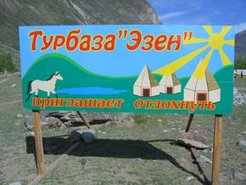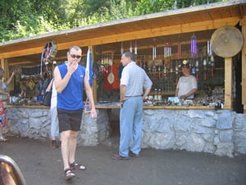Altai – (Re)birth of a destination: taste, identity and the new geography of leisure in southwest siberia

The Altai Republic (South West Siberia) is becoming a popular holiday destination. In 2007 the Altai Republic (population: 200,000) has received visits from about 800,000 tourists coming mostly from urban areas of South West Siberia. To understand why and how, I do not want to limit this research to the Altai Republic itself, I shall rather address imagination and realisation of consumption forms in those urban agglomerations from which most tourists in Altai originate. This will in turn help to establish to what degree the tourist encounter enables and introduces new forms of consumption among the dwellers of the Altai Republic, whether it changes their skills, fantasy structures and perception of self as well as collective identity. Thus studying the tourist boom in Altai will work as an ethnographic heuristic tool for examining the growth of lifestyle diversification in South West Siberia, its mechanisms, inspirations and limits.

Because the Altai Republic’s Committee of Statistics so far does not recognise tourism as an industry, we have only the overall number of incoming tourists and very little information about the structure of tourism in the Altai Republic. Drawing on data I acquired during my doctoral research in 2004-2005, I suggest a preliminarily distinction between three major groups of visitors to the Altai Republic. The first group, the one which in my view has been growing the most rapidly during 2000s, are consumers of mainstream leisure activities interested in sightseeing, partying, having a rest (khorosho otdokhnut’), satisfying of occasional needs for exotic other and so on. The second group are sport enthusiasts attracted by Altai’s natural environment, who take part in mountaineering, rafting and gliding. The third group could be characterised as ‘seekers of values’, including followers of Nicolas Roerich, Ole Nydahl, Tengriantstvo, and environmental activists. People who can fit into the two later groups were often visiting Altai far before the economic consolidation of the 2000s. Thus even though their number is rising as well, it is so less rapidly and without such a strong correlation with the economic growths in Russia which can be observed with regard to the first group.
The growth of tourist industry creates a welcome opportunity to redistribute growing income of industrial areas of Russia into economically and socially marginalised areas of Siberia. Yet, impression I got during my doctoral research is that big proportion of tourist enterprises are owned by individuals and companies from outside of the Altai Republic, some of them from so far as st. Petersburg or Moscow. Also seasonal tourism workers are not always hired within the Altai Republic. Quite often one can meet people from Barnaul or Biisk (cities in neighbouring Altai Krai) on key as well as ordinary positions in tourist industry. Tourist enterprises also often occupy exclusive spots on attractive places like banks of Katun’ river which have until now survived as communally used places with free access. No wonder, that the development of tourist industry creates not only hopes but also potential as well as actual tensions among inhabitants of the Republic, tourism entrepreneurs, tourist workers and tourists.
Tourism is becoming such a phenomenon of contemporary Altai Republic that, learning from examples from other tourist areas studied by anthropologists, we can foreseen that it will soon make a deep impact on all aspects of life in the Altai Republic.
This project is designed as part of Conditions and Limitations of Life-Style Pluralism in Siberia project of Siberian Studies Centre of Max Planck Institute for Social Anthropology. On the theoretical level it will address questions connected to the notion of lifestyle, consumption and leisure.

